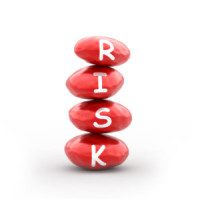There is a difference between clinical safety and physical safety and this difference is neither understood nor acknowledged by the trade publications that create lists – and run advertisements of- the “Best†hospitals. The lack of Clinical Safety and the shoddy survey methodology make us wonder why they produce the lists in the first place – they do not provide accurate information to patients that helps them decide on the best hospitals to receive care.
Clinical Safety: Medical Errors Continue to Claim Hundreds of Thousands of Lives Annually
 One major fact that deserves a lot more scrutiny by the public is that Hospitals are not safe places in general; hundreds of thousands of patients die each year, and the situation is getting worse, not better. Patients turn to ratings by respected publications for guidance about safe and quality care; by using these ratings to quell concerns about safety, the public health and healthcare sector obfuscates the true level of safety and security, and perpetuates the myth of quality care and readiness, while the sector remains the weakest link in the Homeland Security Chain.
One major fact that deserves a lot more scrutiny by the public is that Hospitals are not safe places in general; hundreds of thousands of patients die each year, and the situation is getting worse, not better. Patients turn to ratings by respected publications for guidance about safe and quality care; by using these ratings to quell concerns about safety, the public health and healthcare sector obfuscates the true level of safety and security, and perpetuates the myth of quality care and readiness, while the sector remains the weakest link in the Homeland Security Chain.
Looking at a top five list of “best†hospitals, clinical quality of care is assumed to be provided, although in practice it cannot be a given when faced with estimates of hundreds of thousands of deaths due to medical errors, first examined in the shocking IOM report in 1999, To Err is Human. Ten years on, Consumer’s Union published their report, “To Err is Human, To Delay is Deadly†which showed that very little had changed despite the alarms raised and the industry promises to reduce the number of preventable deaths. Fifteen years on, the estimate has risen to over 440,000 preventable deaths according to a Journal of Patient Safety study. As quoted from a well-written 2013 Forbes article:
“The reason many hospital leaders fail to put a priority on safety is that we as a country haven’t forced them to do so. On the contrary, we haplessly pay them for these errors. We tolerate hospital lobbyists insisting on hiding their error rates. We fail to insist on safety when we choose where to seek care or when we put together our business’ health benefits. When we don’t demand safety, they don’t supply it.â€
Recent events also demonstrate that it is not only the Ranking Organizations that can hide the reality from an uninformed public; according to his Senate testimony after resigning as VA Secretary, General Shinseki noted that the Congress’ own monopoly watchdog, the Joint Commission (TJC), had been consistently (30 years+) giving the VA Health System high marks and even Top Ratings for the care provided, despite several scandals that suggested otherwise. The recent VA scandal turned out to be a major surprise to many, but we know from our research that Congress has a steady stream of complaints coming in from veterans at the end of their rope, and staffers call individual VA hospitals regularly to intervene. As seen by the numbers above, VA may be the tip of the iceberg when it comes to assessing the quality of care and safety of patients in all US hospitals.
The Ranking Methodology is Flawed and Self-Serving
 While reviewing our latest article published in the June/July Homeland Security Today, and the excellent companion piece by Peter Marghella, we were reminded about how self-serving and misleading the nation’s Hospital Ranking entities have become in selecting a facility for safe, quality care.
While reviewing our latest article published in the June/July Homeland Security Today, and the excellent companion piece by Peter Marghella, we were reminded about how self-serving and misleading the nation’s Hospital Ranking entities have become in selecting a facility for safe, quality care.
Last year we did a series of articles on the subject of hospital rankings, and although RTI (US News’ research contractor) conceded on some issues of methodology; removing some of the most subjective and self-serving criteria for ranking hospitals, the methodology is flawed and does not accurately represent anything that will help PATIENTS make better decisions based on ACCESS, QUALITY and COST of care, which are the foundational components of an effective healthcare system. These rankings are a thinly-veiled marketing tool for the hospitals to claim they do a better job than competitors. A good example is covered in this post, which discusses how Langone Medical Center in New York City managed to turn the failure to prepare for Superstorm Sandy into a public relations win and millions more in subsidies.
A deeper and more critical look at the methodologies of ranking, who benefits and whether they are useful followed in this post, which cited very good analysis from HANYS (Hospital Association of New York State), as they tried to untangle fact from fiction and stress test the methodologies offered by the most vocal and visible survey providers in the market.
Among the important recommendations for improvement in this survey of surveyors, methodology, data quality and data comparability issues came to the top:
- A transparent methodology;
- Evidence-based measures;
- Measure alignment;
- Appropriate data source;
- Most current data;
- Risk-adjusted data;
- Data quality;
- Consistent data; and
- Hospital preview.
KEY RECOMMENDATION
“HANYS supports the availability of hospital quality and safety information to help patients make choices and assist providers in improving care. However, the information must be based on a standard set of measures that have been proven to be valid, reliable, and evidence-based.â€
We agree with most of these recommendations but would also like to see other criteria included for selection of top hospitals.
PAY TO PLAY AND SELECTIVE INCLUSION
 A recent RAND Corporation Study also came out with some interesting points concerning the US News methodology and conclusions, commenting that more expensive hospitals were more likely to be rated higher than those who were in the mid-range or low-range, despite worse outcomes for the more expensive facilities on some key quality metrics including readmission rates. This is not so surprising if we consider that hospitals are required to pay US News to use the logo in advertising, as in the case of Children’s Mercy Hospitals, who paid $42,000 for the US News stamp of approval in their ads. Clearly, this kind of conflict of interest negates any semblance of an impartial survey process. This is only one example from one survey and there are many more…
A recent RAND Corporation Study also came out with some interesting points concerning the US News methodology and conclusions, commenting that more expensive hospitals were more likely to be rated higher than those who were in the mid-range or low-range, despite worse outcomes for the more expensive facilities on some key quality metrics including readmission rates. This is not so surprising if we consider that hospitals are required to pay US News to use the logo in advertising, as in the case of Children’s Mercy Hospitals, who paid $42,000 for the US News stamp of approval in their ads. Clearly, this kind of conflict of interest negates any semblance of an impartial survey process. This is only one example from one survey and there are many more…
Other Factors That Could Be Measured That DO Impact Patient Safety and Quality
What is Missing? – Safety and Security of the Facility
In our opinion, all of the methodologies we have seen lack the inclusion of a measure on the physical safety and security of the facility. Evidence shows that in Katrina, Allison and Sandy, without access to the life-sustaining plant and equipment, it does not matter what care is onsite, because it all becomes useless. The failure to prepare for known hazards (based on climate, geography and geopolitics) can essentially deny care to ALL patients in the blink of an eye when capacity and capability to provide care are devastated. Meeting the three elements of care; Access, Quality and Cost, can be neutralized by a single shift in a seismic plate, tornado, derecho, hurricane, or other All Hazards event. Not integrating this safety factor into the ranking methodology is a major failure in protecting all stakeholders.
What is Missing? – Social Obligations
Healthcare is a very opaque environment and the general public does not understand how likely hospitals and other care providers are to put their own interests above patients; how many customers would continue to visit an auto mechanic who uses counterfeit parts and charges premium prices, loses control of customer credit card data, and cheats on taxes?
While we do understand the complexity of the business environment and pressure to contain costs, we have to ask whether a hospital should be considered among the top rated if it has participated in blatantly illegal and uncivil behavior; multiple fines for fraud and abuse, loss of personally identifiable health information, failure to report major errors, illegal hiring practices, failure to adequately protect employees from workplace hazards, failure to take reasonable measures to stem the rising tide of workplace violence, especially among women caregivers. Do they even deserve your business, much less a Best Hospital rating?
While the bottom line of the organization is critically important to viability, the steady erosion of these social factors in favor of profit, rising prices and outrageous salaries has distanced hospitals from the patient. In the end, it should be the patients looking for quality and safe care, not the hospitals looking for an advertising edge, who benefit from the research into the top-rated hospitals.






0 Comments